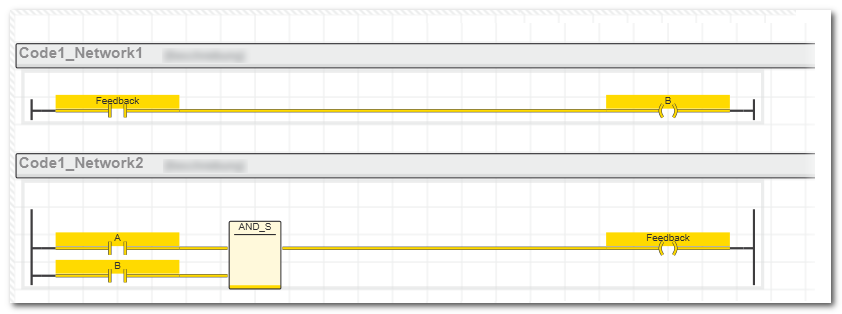Implicit Feedbacks in SNOLD
In SNOLD worksheets, implicit feedbacks can be programmed. For this, the involved variables must be declared as feedback variables. The rules listed below have to be observed when programming implicit feedbacks. Implicit feedbacks can, for example, be used to realize a storing behavior of a safety-related logic (e.g., flip-flop or cycle counter). The storing behavior of the safety-related logic which results from programming an implicit feedback may lead to a complex timing of the entire application.
|
WARNING
|
Unintended machine operation
|
Rules for programming implicit feedbacks in SNOLD worksheets
- Implicit feedbacks in SNOLD worksheets can only be realized using variables but not via connection lines. When using lines, this is considered as forbidden explicit feedback (see figure (2) below).
- Each variable that causes the implicit feedback must be formally declared as feedback variable. This is done by selecting the 'Feedback' flag in the local variables table. When using a variable without set flag in an implicit feedback, a compiler error results.
- Only local variables ('Usage = Local') can be declared as feedback variable.
- To ensure a well-defined timing, the feedback logic must be divided in two separate networks as shown in example below.
Example:
 Feedback variables must not be written and read within one network (as shown in error example below). The compiler generates an error, if a variable is read and written in the same network and if it is read before written.
Error example:
Feedback variables must not be written and read within one network (as shown in error example below). The compiler generates an error, if a variable is read and written in the same network and if it is read before written.
Error example: 